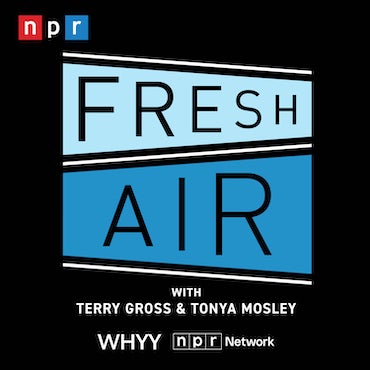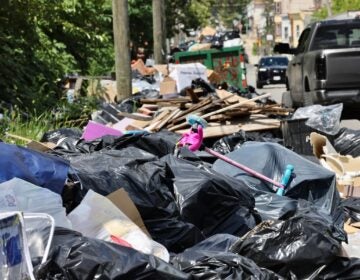With folding of Occupy tents, homeless left out in the cold
The Occupy movements famously pitched tents in the middle of American cities, including just outside Philadelphia City Hall. But for the many homeless who flocked to these camps, the tents were more than political symbols — they were homes.
Some of the homeless in Philadelphia and elsewhere are fighting to maintain similar encampments as winter sets in.
Occupy Philly attracted all kinds of people — including those who saw the tents on City Hall’s Dilworth Plaza as an opportunity to do something they couldn’t have done otherwise: live outside, in public, in relative comfort with a place to store their belongings.
When Occupy Philly was ordered to leave the plaza, most of its homeless members left first. They didn’t want to get arrested; but some of them did want to maintain the higher standard of living those tents had made possible. In the dead of night, and with the help of a pickup truck, a small group relocated to empty land in the city’s Port Richmond section, owned by Conrail.
They called it “Camp Liberty.” But, within a day, Conrail officials ordered the encampment vacated.
From Camp Liberty, they trekked to an I-95 overpass a few blocks away. And yet again they were told — this time by SEPTA which owns that property — to leave.
“It was like you can’t go here, you can’t be over there, because that’s Conrail property,” said Kenny Ogletree, 58.
He lost his home a year ago when his apartment building went up for sheriff’s sale.
At first, Ogletree tried living in a city-funded homeless shelter for single men. There were bedbugs, mice and he didn’t feel safe. He started sleeping wherever he could pass the night.
“Suburban Station, Reading Terminal, 30th Street,” Ogletree says, “They don’t bother you if you’re not a nuisance. The whole thing to me is that nobody gives a crap if you’re homeless or not — they only start giving a crap when you start putting tents up.”
Occupy Philly changed that, said Harvey Lockeridge, a Navy veteran who has been homeless on and off for more than 10 years.
“When we saw Occupy and the tents, it gave us an opportunity to have a temporary roof,” Lockeridge said, “A place that we could actually call home and not move us — and not be told we can’t stay.”
The city had sent homeless outreach workers to Occupy Philly to offer space at shelters. But Lockeridge, like Ogletree and many others, didn’t want to live in the crowded shelters.
City shelters always full
That’s no surprise to Dainette Mintz, who heads the Office of Supportive Housing, overseeing homeless services in Philadelphia.
“There are folks who profess to have had a bad experience in shelters previously. so that’s their reason,” she said. “There are those who feel as though they are threatened by large facilities and feel they are able to better fend for themselves elsewhere. So there are a variety of reasons.
“Obviously, I believe that it allows us a better opportunity to try to break the cycle of homelessness if people are open to be placed in emergency housing and allow us to move them forward,” Mintz said.
But Philadelphia has less and less to offer. Since 2008, case-management services have been cut from shelters, while programs have been curtailed and shut down. The shelters, Mintz acknowledges, are always at capacity. And that’s just the shelters; city officials estimate 60,000 Philadelphians need affordable housing.
The group at Camp Liberty had made the decision to take housing into their own hands — and they’re not alone. About 60 miles east of Camp Liberty, in the middle of suburban New Jersey, is another encampment known as Tent City.
N.J. encampment digs in
The camp sits in the woods, near an inconspicuous intersection in Lakewood. It was founded five years ago by Minister Steve Brigham, who’s lived there himself for the last two years. The camp has a shower, a chapel, and a healthy population of livestock.
“The chickens, their main purpose is to eat the bugs — they go around and eat the ticks and the spiders, and they keep the bug population down.,” says Brigham. “I’m a vegetarian, personally, so I don’t promote killing them for food.”
More than 60 people now live there, some in tents, many in larger wooden structures covered by big plastic tarps. The encampment, Brigham says, shows just how many people need help.
“There are lot of carpenters a lot of builders in the camp that just can’t find any work. So this is the affordable housing,” he says. “A lot of these guys would have to go to the city for city missions, city shelters, and it’s a rough environment. You’ve got to leave during the day, walk the street with all your belongings in your hands, come back to a mass dinner, mass shower, mass sleeping quarters, to wake up to a mass breakfast, take all your belongings to walk the streets until 5 o’clock at night.
“It doesn’t promote self-respect, self-dignity, and you know a lot of the emotional things that make us feel complete are missing from that type of a system,” Brigham says.
One thing Tent City and Camp Liberty have in common is the constant threat of eviction.
Lakewood officials have asked a judge to rule to evict the residents of Tent City, citing safety concerns and fire hazards. So far, the judge has not agreed.
WHYY is your source for fact-based, in-depth journalism and information. As a nonprofit organization, we rely on financial support from readers like you. Please give today.




